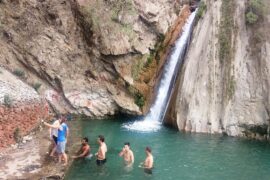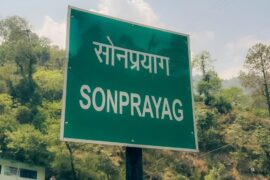Discover Western Ghats Mountains: a UNESCO World Heritage Site
The Western Ghats mountains are a UNESCO World Heritage Site and one of the world’s most important biodiversity hotspots. Spanning over 1,600 kilometers along India’s western coast from Gujarat to Kerala.
Western Ghats are also known as?
Western Ghats are also known as the Sahyadri Mountains. The Western Ghats mountains are famous for their breathtaking landscapes, rich cultural heritage, and significant ecological importance. This article delves into various aspects of the Western Ghats, including their geological formation, geographical extent, biodiversity, environmental significance, cultural heritage, and conservation efforts.
Western Ghats states:
Western Ghats states: The Western Ghats mountains stretch across several Indian states, including Gujarat, Maharashtra, Goa, Karnataka, Tamil Nadu, and Kerala. They act as a natural boundary between the Deccan Plateau to the east and the coastal plains of the Arabian Sea to the west.
Geological Formation of the Western Ghats
Ancient Origins: The Western Ghats are among the oldest mountain ranges on Earth, formed about 150 million years ago during the breakup of the supercontinent Gondwana. They emerged through the process of plate tectonics when the Indian Plate collided with the Eurasian Plate, leading to the uplift of the Western Ghats.
Major Rock Types: The region boasts a variety of rock formations, such as basalt, gneiss, and granite. Basalt is predominant in the northern parts, forming extensive plateaus known as ‘traps,’ while gneiss and granite are more common in the southern regions.
Suggested Read: Discover a Travel Guide to Nanda Devi Raj Jat Yatra in Uttarakhand

Major Peaks and Ranges:
- Anaimudi: The highest peak, located in the Anaimalai Hills of Kerala, reaching 2,695 meters.
- Nilgiri Hills: Known for their scenic beauty and tea plantations, spanning parts of Tamil Nadu, Kerala, and Karnataka.
- Sahyadri Range: A continuous chain of mountains parallel to the western coast, comprising various sub-ranges and plateaus.
Biodiversity of the Western Ghats
Hotspot of Biodiversity: The Western Ghats mountains are recognized as one of the world’s eight ‘hottest hotspots’ of biological diversity. It hosts an incredible variety of flora and fauna, many of which are endemic.
Unique Flora:
- Shola Forests: High-altitude evergreen forests with unique tree species.
- Evergreen and Semi-Evergreen Forests: Home to species like teak, rosewood, and sandalwood.
- Montane Grasslands: Found at higher elevations, supporting specialized plant species adapted to cold and windy conditions.
Rich Fauna: The Western Ghats are teeming with wildlife, including many endemic species. Iconic animals include:
- Lion-tailed Macaque: Endemic to the Western Ghats, known for its distinctive look.
- Malabar Giant Squirrel: A large, colorful squirrel found in the dense forests.
- King Cobra: The world’s longest venomous snake, inhabiting the forests and grasslands.
Environmental Significance of the Western Ghats
Water Catchment Area: The Western Ghats are crucial for water supply, feeding rivers like the Godavari, Krishna, Kaveri, and Tungabhadra, which support millions of people.
Climate Regulation: The Ghats intercept monsoon winds from the Arabian Sea, bringing heavy rainfall essential for the region’s ecological balance and agriculture.
Carbon Sequestration: The dense forests help mitigate climate change by absorbing and storing carbon dioxide.
Cultural Heritage of the Western Ghats
Indigenous Communities: The Western Ghats are home to numerous indigenous communities with unique cultural traditions, languages, and lifestyles, playing a vital role in conserving traditional knowledge.
Sacred Sites: The region is dotted with sacred groves, temples, and pilgrimage sites revered by Hindu, Jain, and Buddhist communities. Notable sites include:
- Sabarimala: A major pilgrimage center in Kerala, dedicated to Lord Ayyappa.
- Shravanabelagola: Known for its colossal monolithic statue of Lord Gomateshwara, a Jain pilgrimage site in Karnataka.
Tribal Art and Crafts: Indigenous communities are known for their art and crafts, including intricate bamboo and cane work, traditional textiles, and herbal medicine.
Conservation Efforts in the Western Ghats
Protected Areas: Numerous national parks, wildlife sanctuaries, and biosphere reserves have been established to conserve the region’s biodiversity. Notable ones include:
- Silent Valley National Park: A pristine rainforest in Kerala, home to rare and endemic species.
- Western Ghats World Heritage Sites: Recognized by UNESCO for their outstanding biodiversity.
Conservation Initiatives: Various organizations and government agencies are working on habitat restoration, wildlife monitoring, community-based conservation, and sustainable development practices.
Eco-Tourism: Promoting eco-tourism provides a sustainable way to generate income while conserving the natural and cultural heritage. Responsible tourism practices aim to minimize environmental impact and support local communities.
Future Prospects for the Western Ghats
- Sustainable Development: Balancing conservation with sustainable development is essential. This involves adopting eco-friendly practices in agriculture, tourism, and infrastructure development to minimize environmental degradation.
- Climate Adaptation: Building resilience to climate change is crucial. Measures include restoring degraded habitats, creating green corridors, and implementing disaster preparedness plans.
- Community Engagement: Involving local communities in conservation efforts is vital. Empowering indigenous peoples, supporting traditional livelihoods, and promoting sustainable land-use practices can enhance conservation outcomes.
Western Ghats Mountains Western Ghats Mountains Western Ghats Mountains Western Ghats Mountains




Comments are closed.